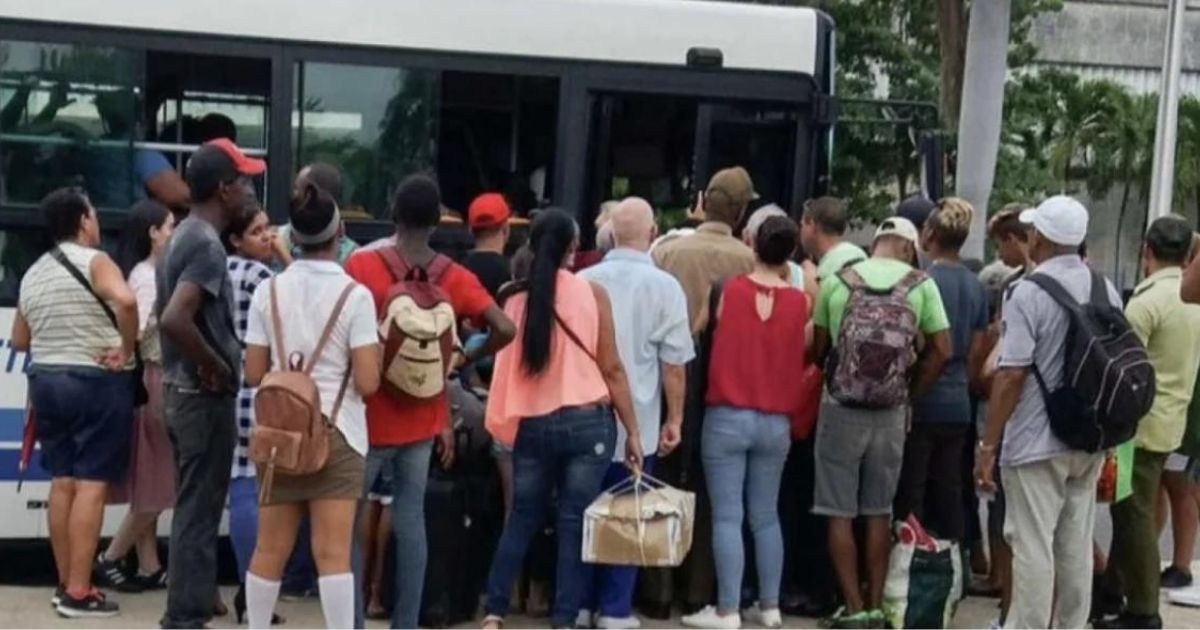The Cuban government has acknowledged the transportation crisis in the country, revealing that more than half of the provincial routes are paralyzed, as reported during the Cuban Parliament session this Tuesday. Eduardo Rodríguez Dávila, the Minister of Transport (Mitrans), stated that by the end of April, 52% of the routes of provincial transport companies were halted, according to the official newspaper Granma.
The minister explained that, of the active provincial routes, 86% operate with only one trip in the morning and another in the afternoon. Rodríguez admitted that the situation is more critical in the provinces of Camagüey, Granma, Villa Clara, Ciego de Ávila, Holguín, Matanzas, and Artemisa.
Deputies also learned that for 2024, the plan includes 1.306 billion passengers, and until April, 908 million had been reached. However, according to Granma, there is a trend of "decline in passenger transportation in the country." This situation was justified by "the deterioration of the technical availability coefficient and fuel limitations."
Parliamentarians were also informed that, according to the results of an audit conducted on the country's forwarding companies, 2,268,118 packages arrived in Cuba in 2023, with the most significant impact on Correos de Cuba, Aerovaradero, and Transcargo. However, Ailyn Febles Estrada, vice president of the Commission for Service Attention of the National Assembly of People's Power, acknowledged that there are issues with the transportation of packages.
In this regard, she admitted that the difficulties lie in the allocation and supply of fuel, which affects the delay of package transfers from Havana to the municipalities, markedly impacting the quality of services, according to Granma.
Recently, the leader Miguel Díaz-Canel recognized the disastrous situation of transportation in Cuba but claimed that it is a phenomenon linked to the global crisis. During the YouTube program "Desde la Presidencia," which he himself presents, the leader stated that the sector is in the "worst moments of the last years."
As evidence, last June, images circulated on social media showing dozens of Cubans waiting up to five days on the waiting list at the Havana bus terminal. Journalist Yosmany Mayeta posted a gallery depicting several people of all ages, including young children, sleeping on the floor of the Villa Nueva Terminal in Havana.
On the other end of the route, in the city of Santiago de Cuba, the situation is not much different. The transportation crisis in Cuba is such that people in this eastern city pay up to 1,500 pesos to be listed on a clandestine waiting list at the train terminal to travel. Affected individual Esther reported to journalist Mayeta the hardships they endured to leave the province.
FAQs on Cuba's Transportation Crisis
Here we address some common questions about the current transportation crisis in Cuba, providing more insight into the issues and their impacts.
What percentage of provincial routes in Cuba are currently paralyzed?
As of the end of April, 52% of the provincial routes of transport companies were paralyzed.
Which provinces in Cuba are most affected by the transportation crisis?
The provinces most affected include Camagüey, Granma, Villa Clara, Ciego de Ávila, Holguín, Matanzas, and Artemisa.
What are the main reasons for the decline in passenger transportation in Cuba?
The decline is mainly attributed to the deterioration of the technical availability coefficient and fuel limitations.
How has the transportation crisis affected package deliveries in Cuba?
The crisis has caused significant delays in transferring packages from Havana to municipalities, severely impacting service quality.
